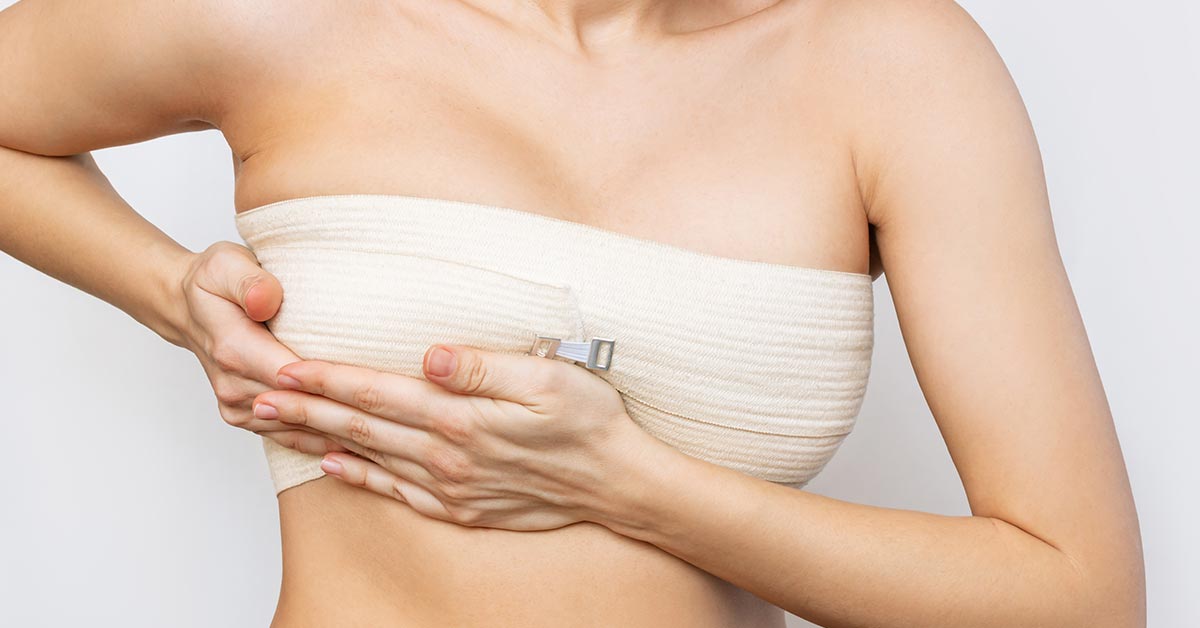Fat transfer breast augmentation is a type of breast augmentation procedure that has gained popularity as a minimally invasive alternative to traditional breast augmentation procedures such as breast implants. While the appeal of using one’s own fat to enhance the breasts is evident, it is crucial for individuals considering this option to be aware of the potential risks and complications associated with the procedure. In this article, we will explore fat transfer breast augmentation risks and how to avoid it, as well as its benefits worth considering.
Understanding the Procedure
Fat transfer breast augmentation involves the extraction of excess fat from areas like the abdomen or thighs through liposuction. This fat is then purified and injected into the breasts to achieve the desired enhancement. While the procedure is generally considered safe, it is not without its share of potential risks.
Fat Transfer Breast Augmentation Risks And Possible Complications
Although fat transfer breast augmentation procedure is generally safe, as with any other aesthetic procedure, it also comes with possible risks and complications. These risks and complications can be minimised and even avoided by taking certain precautions and making informed decisions.
- Incomplete Fat Survival – Not all of the transferred fat may integrate successfully with the existing breast tissue, leading to variations in volume and potentially requiring additional procedures to achieve the desired results.
- Fat Necrosis – Occurs when the transferred fat cells do not receive an adequate blood supply, leading to the death of fat cells. This can result in the formation of firm lumps or nodules in the breast tissue.
- Calcification – The injected fat may undergo calcification, resulting in the formation of small lumps or deposits. Although these calcifications are usually benign, they can be detected on mammograms and may cause confusion during breast cancer screenings.
- Cysts – Fluid-filled sacs that can develop at the injection sites where the fat has been transferred. While cysts are generally benign, their presence can cause discomfort, and in some cases, they may require medical attention.
- Infection – As with any procedure, there is a risk of infection at both the donor and recipient sites.
- Changes In Breast Sensation – In some cases, patients may experience changes in nipple or breast sensation.
- Hematoma And Seroma Formation – Collections of blood (hematoma) or fluid (seroma) at the surgical sites can occur, necessitating drainage to prevent complications such as infection or tissue damage.
- Scarring – While the incisions for liposuction are typically small, scarring can still occur.
- Asymmetry – Achieving perfect symmetry with fat transfer can be challenging, as there may be variations in the survival of transferred fat between the two breasts. This may result in uneven results that might require further adjustments.
Complication Rates Of Fat Transfer Breast Augmentation
According to a study, complication rates of fat transfer breast augmentation are low and support fat transfer breast augmentation as an alternative to breast implants. Out of all the risks and complications, radiologic changes such as calcifications and fat necrosis are high however, these changes do not have a significant impact or consequences on the patients.
How To Avoid The Risks And Complications Of Fat Transfer Breast Augmentation
It is important to choose a qualified and experienced plastic surgeon, discuss expectations openly, and adhere to pre and postoperative instructions. These measures can significantly reduce the likelihood of fat transfer breast augmentation risks and complications. Ultimately, informed decision-making and a thorough understanding of fat transfer breast augmentation risks are paramount for a successful and satisfying outcome.
What Are The Benefits Of Fat Transfer Augmentation?
Fat transfer breast augmentation is generally considered as a safe, non surgical technique of breast augmentation. As a non-surgical alternative, it offers natural-looking results, providing a dual benefit of enhancing breast volume while contouring other areas through liposuction. This approach minimises scarring, reduces the risk of allergic reactions associated with traditional implants, and boasts a shorter recovery period compared to surgical alternatives. Additionally, the transferred fat may integrate seamlessly with existing breast tissue, offering a soft and authentic feel.
Schedule A Fat Transfer Breast Augmentation Consultation
Health365 Aesthetic has partnerships with trusted and reliable clinics and hospitals in Thailand for breast augmentation procedures. We facilitate bookings, organise beauty tours, and provide help with aesthetic procedures through our multilingual consultants.
Inquire with us through the WhatsApp button below.
Protect against cancer, cardiovascular disease, and other chronic diseases with regular health screening. Compare and shop for health screenings from Singapore and regional healthcare providers at a single convenient platform - shop.health365.sg
This article is informative only and is not intended to be a substitute for professional medical advice, diagnosis, or treatment, and should never be relied upon for specific medical advice.






